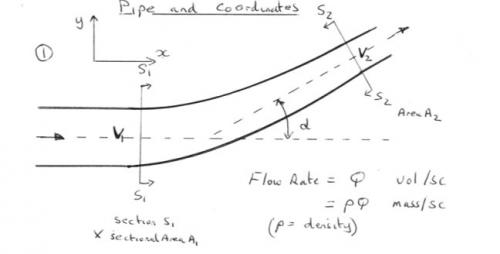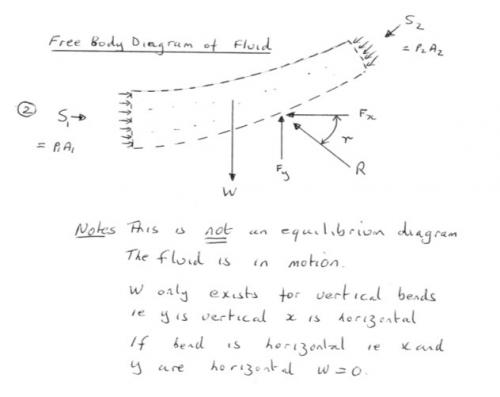-
Posts
17639 -
Joined
-
Last visited
-
Days Won
93
Content Type
Profiles
Forums
Events
Everything posted by studiot
-
Electric current is not energy either.
-
Actually you have this backwards. The density of the earth is inferred by dividing the mass, deduced from astronomical measurements of interactions with other heavenly bodies by the measured dimensions. This is then used to refine theories about composition.
-
Tony, a quantity called mass appears in two unconnected areas of mechanics. Gravitational mass Inertial mass Perhaps you would like to consider the triumph of science in showing that these are in fact equivalent.
-
Operational Research and Game Theory flowered in the 1940s and attracted many of the era's big names in mathematics Kantarovich Mathematical Methods in The Organisation and Planning of Production (Russian 1939, English 1960) VonNeuman The Theory of Games and Economic Behaviour Nash's work appeared in papers in the early 1950s Nash The Bargaining problem Econometrica 18 (1950) Non-Cooperative Games Annals of Mathematics 54 (1951) Two-person Cooperative Games Econometrica 21 (1951)
-
In another current thread Unity+ is asking about the ancient Greeks. The ancient Greeks took a largely geometric view of maths and they offered a geometric construction for 'division'. It is instructive to try to apply this to both division of a nozero line (=division of a real number by zero) and a zero line (=0/0).
-
The number axioms are suprisingly few and do not include division. In advanced algebra there is a formal entity called a division ring. http://en.wikipedia.org/wiki/Division_ring Part of the reason we have rings, fields, groups and so on (carefully) defined is to overcome the difficulties that appear in less detailed treatments.
-

Angular momentum and linear momentum relationship
studiot replied to 514void's topic in Classical Physics
In our 3D world there are actually 3 distinguishable axes. There are many beautiful an interesting phenomena without trying to invent some by guesswork. The equations everyone are referring to are known as Euler's Equations. These can give rise to chaotic action as can be seen and tested in this simple example. Take a brick shaped object eg a book, a matchbox, a box of chocolates, or even a small brick, so that the length, breadth and depth are all different. Take the block by a pair of opposite faces and and toss it up the into the air, spinning it at the same time. You will find that the block spins readily and stably about two of the three axes, defined by the faces, but starts to wobble very quickly about the third. -
A good introductory text to this side of the subject of business mathematics, up to and including the Axioms of Nash, is to be found in "An Introduction to Linear Programming and Game Theory" by Paul R Thie, published by Wiley.
-
What's nice about them? I only wish my wallet obeyed the rules for manipulating infinities, rather than the rules for manipulating real numbers, so If I take out £10 from my wallet I still have the same amount of money in it.
-
You must have had some bad fish for dinner. The OP was very wide ranging and I'm simply trying to offer up a selection of points for consideration. I make no claims that the my list is exhaustive. As I understand game theory it is about the balance between the possible losses and the possible gains and maximising the function gains minus losses, allowing that the maximum may be zero. But the seller can do 'better', although that would mean the buyer doing worse. Value, of course, in an imprecise term.
-
You would need to elaborate on that and explain why it is superior (or at least no worse than) to more conventional arrangements.
-
Consider these examples. 1) I buy 10 fish for $1 each and offer them for sale at a fish market, where all unsold fish must be disposed of at the end of the day's trading at 5c per fish. What price should I charge? As I understand game theory it says that I should start offering them cheaply and increase the price as I begin to sell them. This minimises the potential loss if I do not sell any. However this is the obverse of the practice enacted by most market traders I have seen who start dear and cut prices at the end of the day. 2) I buy 10 fancy boxed dolls for $1 each and sell them at one of those 'one day only' auctions. Here traders habitually offer the first below cost and bid each one up to hope to sell the last one at $15 or $20.
-
Agreed, but what was you question here? Flexible small bore pipes and pulsed fluid action (unsteady flow) introduce many new variables.
-
One thing to observe is the relationship between time and money. The 'value' of money depends, in part, on when it occurs. You should look up concepts like Net Present Value (NPV) Discounted Cash Flow (DCF) Pricing policy may dpend upon game theory but also upon time and perishability of the product. So it's OK to play games with real estate that will still have a value next week or next month if unsold, but not with fresh fish that will have no value, or even negative value (disposal costs) next week if unsold.
-
Business calculations are mostly about artificial rules (mostly to do with tax), not natural mathematical ones. There is some mathematical theory, such as linear programming, applicable to large scale operations such as oil refineries but not, I would have thought to an e-shop. As regards the handling of statistics, many programs such as Excel, Mathematica, MathCad, have lots of built-in statistical functions, and there are some dedicated statistical ones such as SPSS. There are also a number of business 'management' programs that can analyse and present data, but the best of these are usually accounting packages which already include the necessary tax rules. Sorry I know nothing about Ukranian tax rules, but it is good to welcome and support someone making business, not war.
-
I don't see mass as having a direction. What must vary is the apparent density, from point to point within a spinning relativistic system.
-
What I am trying to get you to consider is the distribution of mass gain as a function of radial distance along with its implications, with both my earlier and more recent comments. Perhaps I haven't expressed myself very well, if so I'm sorry.
-
-
The first thing to realise is that pipes have curved bends, not abrupt changes of direction as you have drawn. This is because smooth profiles make for smooth flow and smooth flow changes. It is not clear whether your pipebend is vertical or horizontal. Pipes do not normally twist in two directions at once. So the analysis can usually be two dimesional as I have shown below. So fig1 shows the flow entering horizontally along the x axis. If the bend is in a horizontal plane the y axis is also horizontal and the weight of the fluid in the bend (W) is omitted from the following calculations. If the bend is in a vertical plane then the y axis is vertical and W appears in the vertical summation. The fluid passes through a bend in the pipe and is deflected through angle d in the positive y direction. I have also shown the bend pipe diameter reducing as the most general case. If the pipe has constant diameter then the velocity and area do not change. We consider a segment of fluid between sections S1-S1 and S2-S2, which are edit :where the pipe is tangent to the entry and exit directions respectively. For a constant volumetric flow rate, Q we have [math]Q = {V_1}{A_1} = {V_2}{A_2} = const[/math] and a mass flow rate of [math]\frac{{dm}}{{dt}} = wQ = w{V_1}{A_1} = w{V_2}{A_2} = m[/math] Which is also constant or fluid would accumulate in the pipe. Where w is the fluid density. If we consider the fluid inside the bend between sections S1-S1 and S2-S2 and draw a free body diagram we obtain fig2. It is very important to realise that the following is not an equilibrium analysis, since the fluid is in motion. Further the fluid in the bend segment is not a differential (small) element it is the whole amount. So we have the basic equation that Net force acting on the fluid = Sum of all forces acting = rate of change of momentum = mass flow rate x velocity change Now both the forces and the momentum are vectors so may be resolved along the x and y axes as is done in the following calculations. So R is the resultant pipe force on the fluid such that [math]R = \sqrt {F_y^2 + F_x^2} [/math] and [math]\tan r = \frac{{{F_y}}}{{{F_z}}}[/math] r is the angle the resultant makes with the x axis. We calculate the forces on the fluid becasue this is easier than calculating directly the forces on the pipe. Of course the force exerted by the fluid on the pipe is equal and opposite to R. The other forces acting on the fluid are the weight if vertical (otherwise W=0 as previously noted) and the pressure forces S1 and S2 at each section. [math]{S_1} = {P_1}{A_1}[/math] and [math]{S_2} = {P_2}{A_2}[/math] Where P is the fluid pressure and A the section area at that section. So in the x direction [math]{S_1} - {S_2}cosd - {F_x} = wQ\left( {{V_1} - {V_2}\cos d} \right)[/math] and in the y direction [math]{F_y} - {S_2}\sin d - W = wQ\left( {{V_2}\sin d - 0} \right)[/math] Where V the fluid velocity at the section. These may easily be solved for Fx and Fy This analysis is useful if we wish to provide a thrust block to receive -R as a direct force. If, however, the pipe is fitted to brackets then the brackets resist the flow force in bending. This can be seen as R applies an unbalanced counterclockwise moment to the fluid to turn it, so the fluid applies a corresponding clockwise moment to the bracket. Does this help?
-
Your problem is that your object (a disc) has components that possess differential tangential velocities with relastivistic implications, particularly for the mass summations needed to evaluate a 'centre of mass'. You did not answer my question about relative velocity, which should help you answer this,as should an appeal to symmetry.
-
What is the centre of mass in a relativistic system?
-
You have stated the acceleration version of Newton's law. another version is that Force = rate of change of momentum. This is the version used in the momentum balance or so called momentum equation in fluids. It's too late to do this tonight, but tomorrow I will draw a diagram to show how this is applied to forces acting at bends in pipes.
-
Fluid in a pipeline does indeed exert (side) thrust on any bend or change of direction. This is why thrust blocks are placed at changes of direction along a pipeline, and why pilelines should be built straight except at defined changes of direction. You are also correct in thinking that this force is calculated by using a momentum balance for the fluid. Do you understand the principles of momentum balance in fluid dynamics?
-
Thank you for your link. Did you follow up the references I gave? Those who believe that the irridium came from the interior of the earth have to explain how it appears in non igneous rocks, in particularly high concentrations, around the perimeter of impact craters. The concentration decreases rapidly with distance from the epicentre of the impact. This is one of the distinguishing tests to try to determine whether a 'crater' (filled in or otherwise) was meteoric in orign or otherwise.



